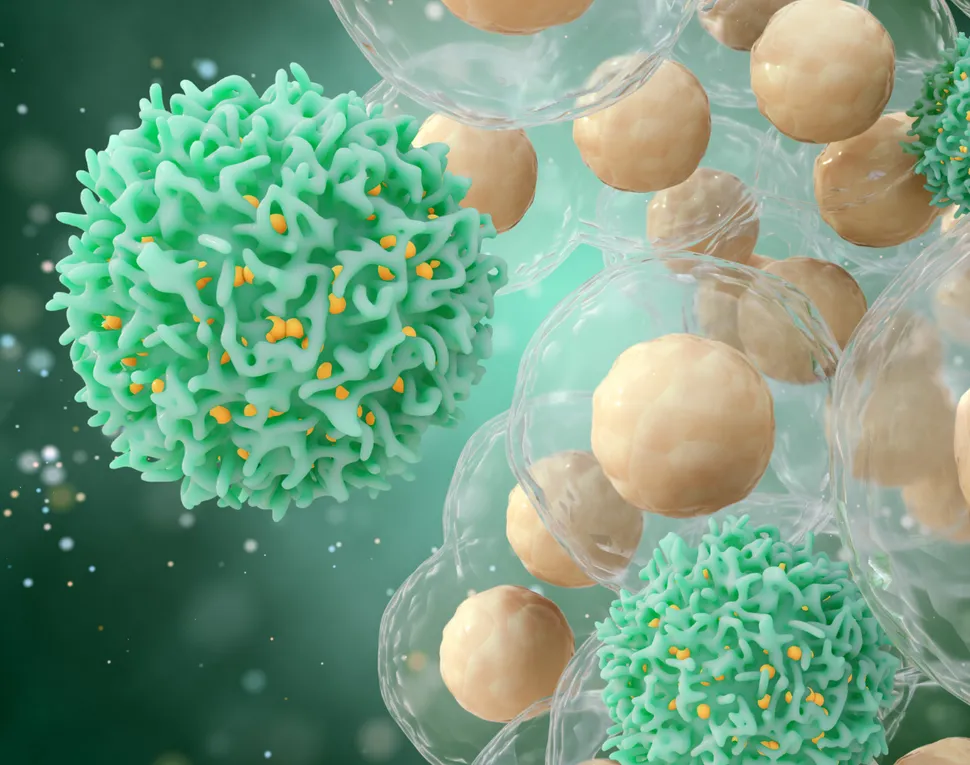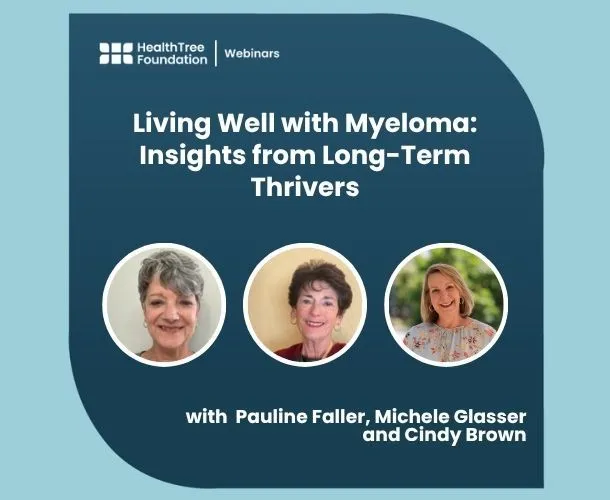CAR-T Constructs and the Potential Future Promise of OX40-CAR-T in Multiple Myeloma

There are currently two FDA-approved anti-BCMA CAR-T products on the US market to treat multiple myeloma: Abecma (idecabtagene vicleucel [ide-cel], marketed by Bristol Myers and Carvykti (ciltacabtagene autoleucel [cilta-cel], marketed by the Janssen division of Johnson & Johnson).
In talking to fellow multiple myeloma patients, I have the impression that we generally understand that CAR-T cells are ‘engineered’ in a laboratory environment using T-cells harvested from patients.
At the same time, however, it also seems that we tend to think that an anti-BCMA CAR-T cell is a T-cell with some sort of ‘wiffadil’ ( for want of a better word) that has been attached in the lab that latches on to the BCMA-protein expressed on the surface of our myeloma cells and that then kills those cells. Myeloma Crowd by HealthTree has posted plenty of articles over the past years that discuss the promise of CAR-T in treating myeloma and, at times, the moniker ‘CAR-T cell construct’ is used.
Let’s spend some time explaining the building blocks that make up a CAR-T construct. And there are some nice graphics we can refer to, provided in the marketing materials of Abecma and Carvykti, allowing us to work with live examples of the mechanisms of action of both of these cell technologies that will become increasingly important to us.
Start with Abecma. This link provides not only a video but also a graphical representation of what all has been added to a T-cell, both on the outside and the inside of the cell and how the product goes about killing a MM cell. Next go to Carvykti. You will see a graphical representation of its components and mechanism of action. Both of these graphics pretty much show the full CAR-T construct, and both show the same key building blocks:
- A binding domain: a bloc outside the T-cell that specifically binds to BCMA, a protein that is uniquely overexpressed on myeloma cells (though it is also expressed on healthy plasma cells).
- A hinge: attached to the surface of the T-cell to provide stability for CAR-T cell expression and flexibility to access the targeted BCMA. This hinge “may affect tumor recognition, CAR expression and T-cell activation.”
- The T-Cell: harvested from the patient.
- A co-stimulatory domain: inside the T-cell, transmits additional signals to enhance T-cell activation, proliferation and persistence after the CAR-T cells are infused into the patient. The co-stimulatory domain for both Abecma and Carvykti is 4-1BB.
- A CD3-zeta signaling domain: this leads to T-cell activation in response to binding to the BCMA-targets on the myeloma cells. The signaling domains of Abecma and Carvykti are the same.
A natural question at this point is whether Abecma and Carvykti are the same considering that both target BCMA, and both have the same co-stimulatory domain (4-1BB) and activation domain (CD3-zeta). The answer is not quite.
There are propriety differences between both products in the full constructs that not only interact synergistically with each other resulting in differing side effects and differing myeloma cell killing properties, as well as persistence of the CAR-T post infusion. There is a very interesting paper published in eBioMedicine/Lancet Discovery Science in August, 2020 that goes into nice detail of what is involved in a full CAR-T construct and how the different pieces all tie together.
Which brings us to the second part of the title: what is the significance of OX40? A recent article re anti-BCMA-CAR-T treatment in MM states,
“The response rate and the depth of responses induced by anti-BCMA CAR T cells are impressive; however, the majority of patients eventually relapse.”
There is clearly a need to “… further optimize this potential game-changing therapy for MM.”
A letter to the editor published in the Journal of Hematology and Oncology seems as if progress is being made in optimizing BCMA directed CAR-T therapy. The letter summarizes the results of a Chinese team of researchers that evaluated three different CAR-T constructs. These three constructs are the same in most of their building blocs (the BCMA target ‘binder’, the ‘hinge’/transmembrane and the CD3 zeta signaling domain). Where they differ is in the co-stimulatory domain: one with CD28 (used in early CAR-T constructs), 4-1BB and OX40. CD28 can be discounted fairly rapidly but the differences between the constructs using 4-1BB and OX40 co-stimulatory domains are impressive:
- BCMA targeted-OX40-CAR-T has two times more T effect memory cells compared to the 4-1BB construct, consistent with long-term immune memory
- The OX40 cells proliferate more rapidly post infusion compared to the 4-1BB cells, up to a level of nearly 80 percent
- The OX40 cells play a crucial role in maintaining a high number of CAR+ cells (and therapeutic efficacy) and reduced the incidence of loss of CAR+ cells
The authors conclude:
“In conclusion, our study demonstrated for the first time that OX40-mediated BCMA-targeted CAR-T showed more durable antitumor activity than 41BB-mediated CAR-T cells upon repeated stimulation of BCMA-expressing target cells. Our findings not only provide a scientific basis for designing novel BCMA-targeted CAR-T cells for MM to gain more durable anti MM activities, but also provide valuable data for improving the anti-tumor persistence and reducing recurrence after CAR-T cell therapy.”
This research is still at an early stage, and we will need several more years before we have clinical information that will validate that further progress in treating our disease has been made.
The research was funded by the National Natural Science Foundation in China. Don’t use this as a tidbit to set aside its significance but, please remember that Carvykti was mainly developed by the Chinese Company Legend Biotech, with Janssen/Johnson & Johnson as its licensee/co-development partner.
There are currently two FDA-approved anti-BCMA CAR-T products on the US market to treat multiple myeloma: Abecma (idecabtagene vicleucel [ide-cel], marketed by Bristol Myers and Carvykti (ciltacabtagene autoleucel [cilta-cel], marketed by the Janssen division of Johnson & Johnson).
In talking to fellow multiple myeloma patients, I have the impression that we generally understand that CAR-T cells are ‘engineered’ in a laboratory environment using T-cells harvested from patients.
At the same time, however, it also seems that we tend to think that an anti-BCMA CAR-T cell is a T-cell with some sort of ‘wiffadil’ ( for want of a better word) that has been attached in the lab that latches on to the BCMA-protein expressed on the surface of our myeloma cells and that then kills those cells. Myeloma Crowd by HealthTree has posted plenty of articles over the past years that discuss the promise of CAR-T in treating myeloma and, at times, the moniker ‘CAR-T cell construct’ is used.
Let’s spend some time explaining the building blocks that make up a CAR-T construct. And there are some nice graphics we can refer to, provided in the marketing materials of Abecma and Carvykti, allowing us to work with live examples of the mechanisms of action of both of these cell technologies that will become increasingly important to us.
Start with Abecma. This link provides not only a video but also a graphical representation of what all has been added to a T-cell, both on the outside and the inside of the cell and how the product goes about killing a MM cell. Next go to Carvykti. You will see a graphical representation of its components and mechanism of action. Both of these graphics pretty much show the full CAR-T construct, and both show the same key building blocks:
- A binding domain: a bloc outside the T-cell that specifically binds to BCMA, a protein that is uniquely overexpressed on myeloma cells (though it is also expressed on healthy plasma cells).
- A hinge: attached to the surface of the T-cell to provide stability for CAR-T cell expression and flexibility to access the targeted BCMA. This hinge “may affect tumor recognition, CAR expression and T-cell activation.”
- The T-Cell: harvested from the patient.
- A co-stimulatory domain: inside the T-cell, transmits additional signals to enhance T-cell activation, proliferation and persistence after the CAR-T cells are infused into the patient. The co-stimulatory domain for both Abecma and Carvykti is 4-1BB.
- A CD3-zeta signaling domain: this leads to T-cell activation in response to binding to the BCMA-targets on the myeloma cells. The signaling domains of Abecma and Carvykti are the same.
A natural question at this point is whether Abecma and Carvykti are the same considering that both target BCMA, and both have the same co-stimulatory domain (4-1BB) and activation domain (CD3-zeta). The answer is not quite.
There are propriety differences between both products in the full constructs that not only interact synergistically with each other resulting in differing side effects and differing myeloma cell killing properties, as well as persistence of the CAR-T post infusion. There is a very interesting paper published in eBioMedicine/Lancet Discovery Science in August, 2020 that goes into nice detail of what is involved in a full CAR-T construct and how the different pieces all tie together.
Which brings us to the second part of the title: what is the significance of OX40? A recent article re anti-BCMA-CAR-T treatment in MM states,
“The response rate and the depth of responses induced by anti-BCMA CAR T cells are impressive; however, the majority of patients eventually relapse.”
There is clearly a need to “… further optimize this potential game-changing therapy for MM.”
A letter to the editor published in the Journal of Hematology and Oncology seems as if progress is being made in optimizing BCMA directed CAR-T therapy. The letter summarizes the results of a Chinese team of researchers that evaluated three different CAR-T constructs. These three constructs are the same in most of their building blocs (the BCMA target ‘binder’, the ‘hinge’/transmembrane and the CD3 zeta signaling domain). Where they differ is in the co-stimulatory domain: one with CD28 (used in early CAR-T constructs), 4-1BB and OX40. CD28 can be discounted fairly rapidly but the differences between the constructs using 4-1BB and OX40 co-stimulatory domains are impressive:
- BCMA targeted-OX40-CAR-T has two times more T effect memory cells compared to the 4-1BB construct, consistent with long-term immune memory
- The OX40 cells proliferate more rapidly post infusion compared to the 4-1BB cells, up to a level of nearly 80 percent
- The OX40 cells play a crucial role in maintaining a high number of CAR+ cells (and therapeutic efficacy) and reduced the incidence of loss of CAR+ cells
The authors conclude:
“In conclusion, our study demonstrated for the first time that OX40-mediated BCMA-targeted CAR-T showed more durable antitumor activity than 41BB-mediated CAR-T cells upon repeated stimulation of BCMA-expressing target cells. Our findings not only provide a scientific basis for designing novel BCMA-targeted CAR-T cells for MM to gain more durable anti MM activities, but also provide valuable data for improving the anti-tumor persistence and reducing recurrence after CAR-T cell therapy.”
This research is still at an early stage, and we will need several more years before we have clinical information that will validate that further progress in treating our disease has been made.
The research was funded by the National Natural Science Foundation in China. Don’t use this as a tidbit to set aside its significance but, please remember that Carvykti was mainly developed by the Chinese Company Legend Biotech, with Janssen/Johnson & Johnson as its licensee/co-development partner.

about the author
Paul Kleutghen
I am a patient diagnosed in 2014 with primary plasma cell leukemia (pPCL), a rare and aggressive variant of multiple myeloma and have been very fortunate to find successful treatment at the division of Cellular Therapy at the Duke University Cancer Institute. My wife, Vicki, and I have two adult children and two grandsons who are the ‘lights of our lives’. Successful treatment has allowed Vicki and I to do what we love best : traveling the world, albeit it with some extra precautions to keep infections away. My career in the pharmaceutical industry has given me insights that I am currently putting to use as an advocate to lower drug pricing, especially prices for anti-cancer drugs. I am a firm believer that staying mentally active, physically fit, compliant to our treatment regimen and taking an active interest in our disease are keys to successful treatment outcomes.
More on Treatment Advances
Trending Articles
Upcoming Events




Get the Latest Multiple Myeloma Updates, Delivered to You.
By subscribing to the HealthTree newsletter, you'll receive the latest research, treatment updates, and expert insights to help you navigate your health.
Together we care.
Together we cure.
3x Faster.











